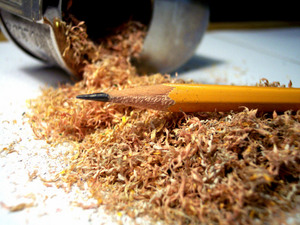Whether you call it a Rube Goldberg machine, a Rube Goldberg device, or even a Rube Goldberg contraption, the essence is the same – design a machine to take an incredibly simple task and perform it in the most complicated manner imaginable. That simple premise has inspired Rube Goldberg Contests, car commercials and has even made Rube Goldberg’s name an entry in Webster’s New World Dictionary. Despite the popularity of Rube Goldberg devices, there is much more to the man than a machine.
Early Life
Rube Goldberg was born on July 4, 1883 in San Francisco. As a child he displayed an early talent for drawing cartoons. In 1900, after graduating from Lowell High School in San Francisco, Rube Goldberg went to the University of California, Berkley to study engineering. Despite Rube’s passion to pursue a career as a cartoonist, his father wanted a more practical use for his son’s drawing talents and mechanical aptitude. The young Goldberg acquiesced to his father’s wishes and graduated in 1904 with a degree in mine engineering. Ironically, it would be a combination of his father’s desires and Rube’s passion for cartooning that would help Goldberg achieve lasting fame.
A Change in Plans
Upon graduating as an engineer, Rube Goldberg went to work for the City of San Francisco Water and Sewers Department. While working for the city, Goldberg continued to draw cartoons. After working for six months in his tedious city job, Goldberg decided he had to pursue a career as a cartoonist. He quit work as an engineer and took a position in the San Francisco Chronicle’s sports department. At first he worked as an office boy – straightening out the desks and taking out the trash. Supposedly, while emptying trash cans, Goldberg discovered his own earlier art submissions to the paper. Undeterred, Goldberg continued working at the Chronicle, eventually becoming the paper’s sports cartoonist.
In 1907, Goldberg moved to New York to take a position at The New York Evening Mail. It was here that he created his breakout success – and it didn’t involve devices or machines, but rather, something a bit more obvious.
Foolish Questions
On October 23, 1908, Goldberg drew a cartoon of a seriously injured man who had fallen off a building. When asked if he’s hurt, the man replies, “No. I jump off this building every day to limber up for business.” Thus was born the Foolish Questions strip, in which someone asks an obvious question and gets a not-so obvious response.
The Foolish Questions cartoons were a tremendous hit. Goldberg published a collection of Foolish Questions as a book the following year. Such was the popularity of the Foolish Questions cartoons that, in addition to numerous books, they also inspired a record and even a game version that came out in 1919.
Rube Goldberg Devices
With the ongoing popularity of the Foolish Questions series, Goldberg launched the cartoon that would make him famous throughout the world. In 1914, Rube Goldberg drew his “Automatic Weight-Reducing Machine”, the first of many more outrageously complex machines designed to perform very simple tasks.
Goldberg claimed his inspiration for his devices came from a college professor he had back in engineering school who had built a complicated machine called a Barodik. The contraption was designed to measure the mass of the Earth. Whether that machine worked or not is a matter of conjecture, but one thing was certain – the cartoon device certainly did.
Rube Goldberg machines were an instant hit, and the cartoonist would draw many more convoluted and unnecessarily complex machines throughout out his long career.
Other Rube Goldberg Cartoons
Boob McNutt
Another popular comic strip by Rube Goldberg, Boob McNutt began in 1915 and was syndicated by 1918. It lasted until 1934.
Lala Palooza
No not the concert festival. Lala was a rich but dimwitted woman who makes her first comic strip appearance in 1936. The strip wasn’t very popular and was gone by decade’s end.
Personal Life
In 1916 Rube Goldberg married Irma Seeman. The couple had two sons and remained married until Rube Goldberg’s death in 1970.
Pulitzer Prize
In 1938, Goldberg was hired by the New York Sun as an editorial cartoonist. In 1947, with the power of the Atom Bomb fresh in people’s minds, Goldberg drew a cartoon about nuclear destruction that won him a Pulitzer Prize the following year.
Retirement
In 1964 Rube Goldberg retired from drawing cartoons. During retirement, Goldberg began a second career as a sculptor, predominately working in bronze. Even working in a different medium, he would create an occasional sculpted machine.
Rube Goldberg continued sculpting until his death on December 7, 1970.
Legacy
In addition to Rube Goldberg machines, Goldberg is memorialized by the National Cartoonists Society’s Reuben Award, named after Goldberg, the society’s first president. In addition numerous Rube Goldberg design contests are held each year to commemorate the man behind the machine.
Additional Reading:
To visit the Rube Goldberg Official Website, click HERE. The site contains a gallery of Rube Goldberg artwork as well as information on the Rube Goldberg Machine Contest.
To read a Time Magazine article on Rube Goldberg from August 16, 1963, click HERE.
To see some Rube Goldberg devices in action, click HERE.
Sources:
Toonopedia by Dan Markstein.
Wikipedia
